The Small Pearl-bordered Fritillary butterfly
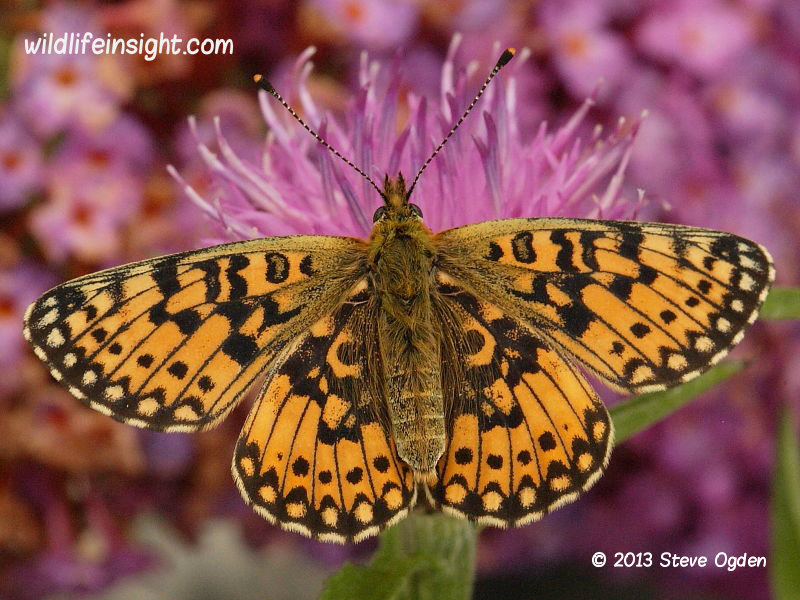
In the British Isles the Small Pearl-bordered Fritillary (Boloria selene) is most commonly found in the western half of the UK.
In recent years it has declined and disappeared from many of its woodland sites in east and central England.
It’s now most numerous on open moorlands, damp culm grasslands and coastal areas of Cornwall, Wales, The Lake District and Scotland.
In mainland Europe the butterfly is found extensively northwards of a line extending from the French and Spanish Pyrenees eastwards into Russia and northwards to the most northerly regions of Scandinavia.
Identification of the Small Pearl-bordered Fritillary butterfly
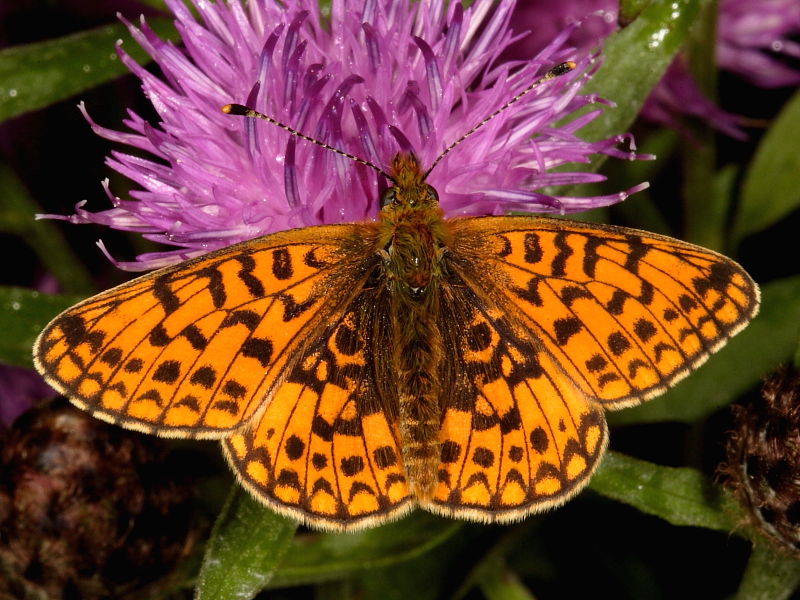
A medium to small size Fritillary with a 35-40mm wingspan.
The males tend to be smaller than the females with second generation butterflies often noticeably smaller than those of first broods.
It’s a species that may be easily mistaken for The Pearl-bordered Fritillary, Boloria Euphrosyne.
Other fritillary butterflies feature in the Fritillary section of the British Butterfly Galleries and the European Butterfly Galleries.
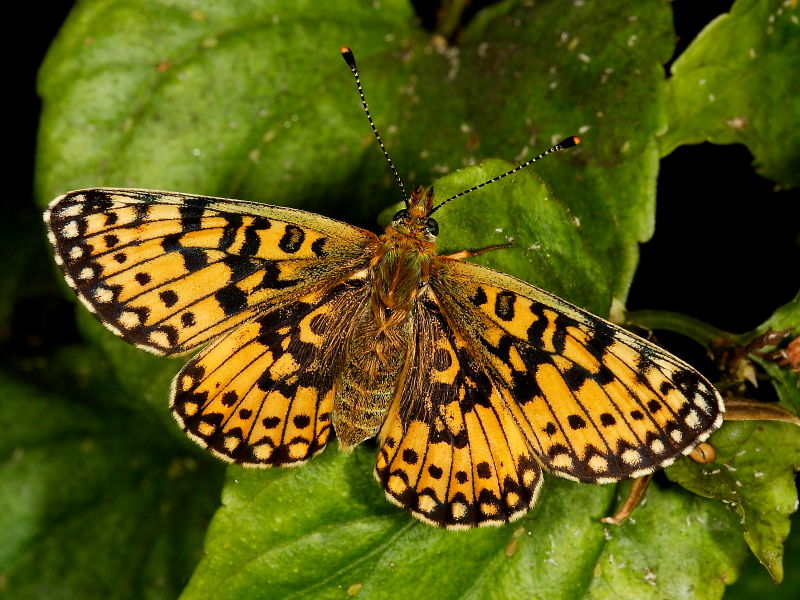
Females are generally larger and a paler orange than the males.
The paler colour is often most discernable in the margin spots of the forewing tip.
In Scotland the sub species insularum is reported as having females with brighter forewings and paler yellow markings close to the wing edges.
Undersides of the hindwing are a distinctive pattern of white and orange/brown blocks.
When fresh and in sunlight the bold, black veining highlight the different coloured blocks giving rise to the underside being likened to a stained glass window.
These hindwing underside features help distinguish this butterfly from the Pearl-bordered Fritillary butterfly which in some locations may share the same habitat and have overlapping flight times.
The Small Pearl-bordered Fritillary caterpillar
Fully grown caterpillars are 20-24mm long, various shades of brown with small black markings.
The most distinctive features are the browny/yellow rows of branched spines, with the pair behind the head elongated to form horn-like appendages.
Other caterpillars can be seen in the British Butterfly caterpillar galleries and Moth caterpillar galleries.
Life cycle of the Small Pearl-bordered Fritillary butterfly
In the milder, southern areas of the UK there are increasingly two generations, the earliest flying from late April to June.
In cooler northern parts of the British Isles there may only be a single generation with emergence a month or so later.
The second generation fly from August to early September and are generally less numerous than the earlier brood. Yet there are sites, such as the sand dune systems of south west Cornwall’s north coast, where second broods may be larger than first generations.
Egg of the Small Pearl-bordered Fritillary
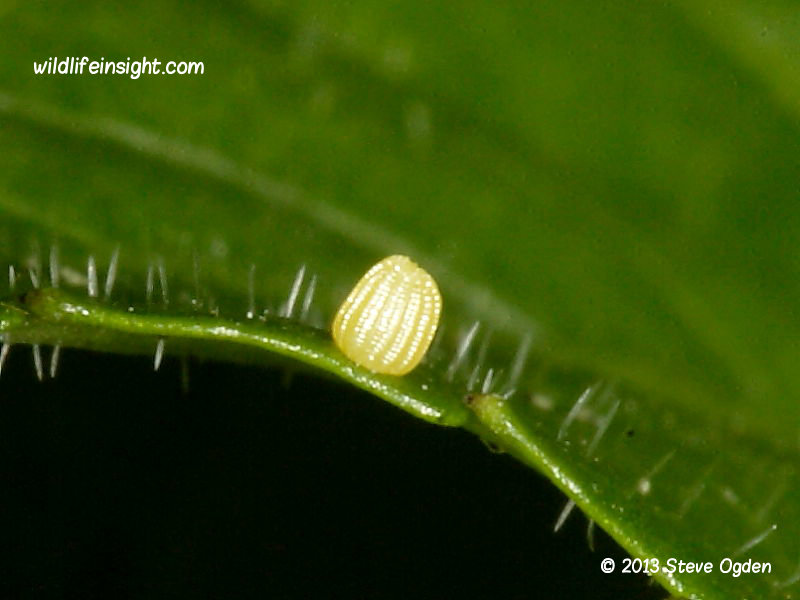
Single eggs are laid on the upper surface of the larval foodplant or close by on low-growing vegetation.
The Common Dog-violet is the most common larval host plant in the UK but laying may also take place on Marsh or Bog Violets, Viola palustris.
In Europe other viola plant species have been recorded as larval foodplants.
Eggs of the Small Pearl-bordered Fritillary butterfly hatch within 10-14 days.
The hatching caterpillars are pale at first and 1.5mm in length.
After eating the egg shells the larvae feed on the leaves, becoming light brown prior to the next moult.
Within three days of emergence the larvae are 4 mm, a light green with a black head.
The caterpillars of second generations and those of broods where there is only a single generation overwinter as brown larvae of between 6-9mm.
Overwintering takes place after a third moult from the end of August to March.
Apart from during unseasonably warm weather the larvae do not feed during this time, remaining motionless, low down amongst leaf and plant litter, at the base of the larval foodplant.
In early spring, late February/March, the overwintered caterpillars become active and begin feeding on the leaves of Common Dog-violet or other Viola species.
They are most active in sunshine and may be seen during the day on the larval foodplant.
Small Pearl-bordered Fritillary chrysalis
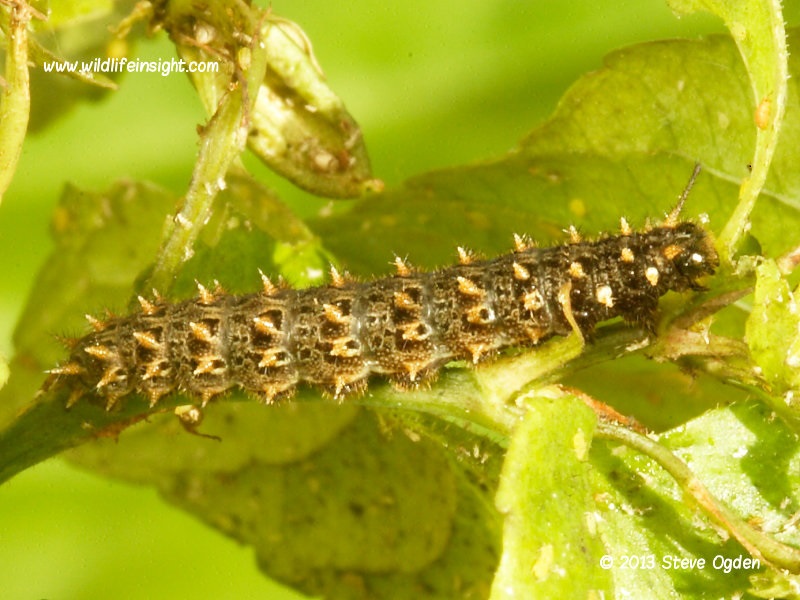
By the end of March/beginning of April the caterpillars are 20-24mm and fully grown.
Having stopped feeding and prior to pupating they may be seen basking in the sun on the dried leaves of leaf litter close to violets.
Pupation of the first generation takes place between April and May or late July/August if a second generation.
The chrysalis is secured by its cremaster to a silk pad formed on a leaf or stem of either the foodplant or a nearby plant.
The butterfly emerges within two weeks.
Recommended Reference Books
- A Cornwall Butterfly Atlas- John Watcher, John Worth &Adrian Spalding.
- A complete guide to British Butterflies-Margaret Brooks and Charles Knight.
- Collins Complete Guide to European Butterfly Guide -Tom Tolman & Richard Lewington.